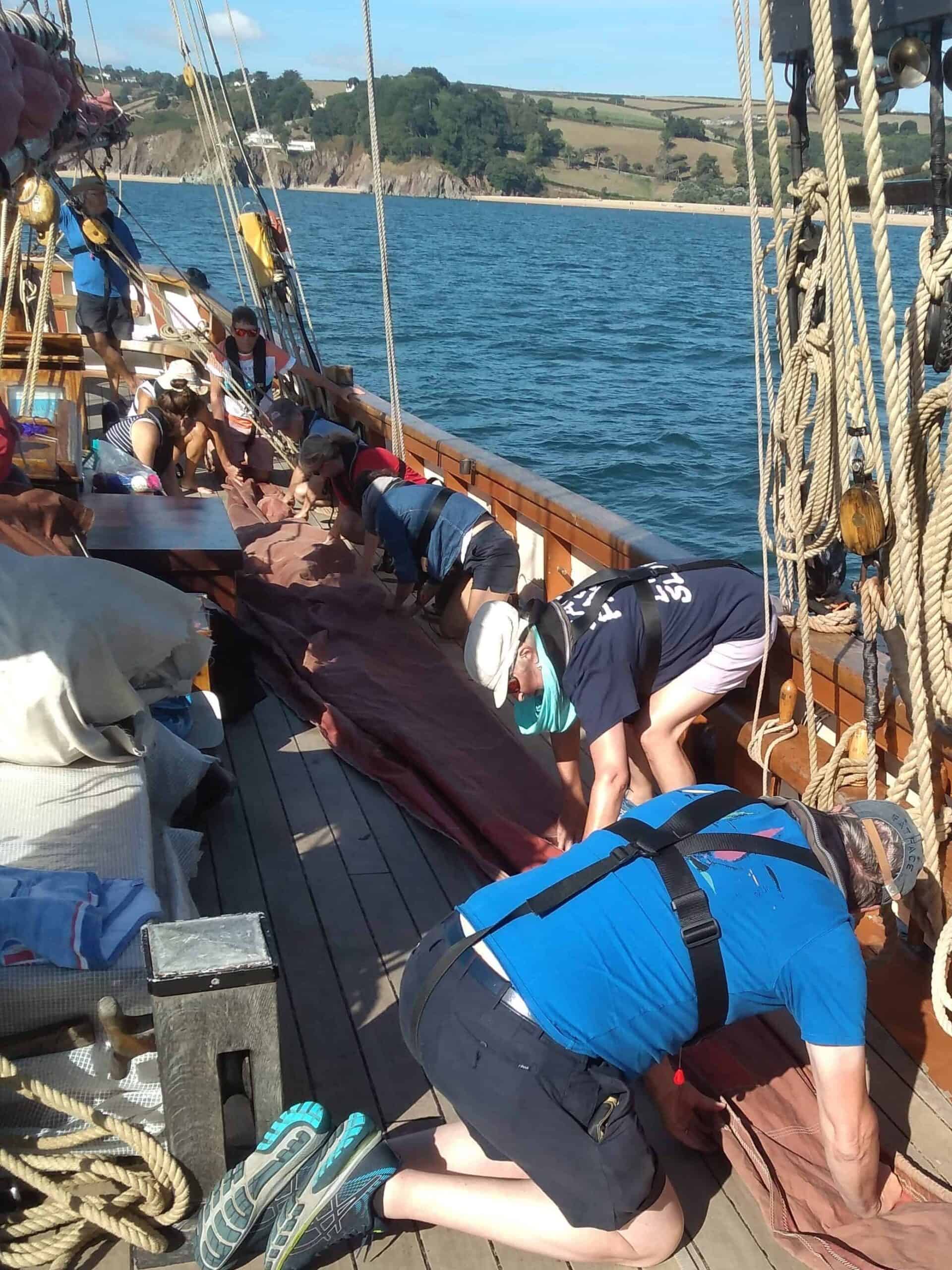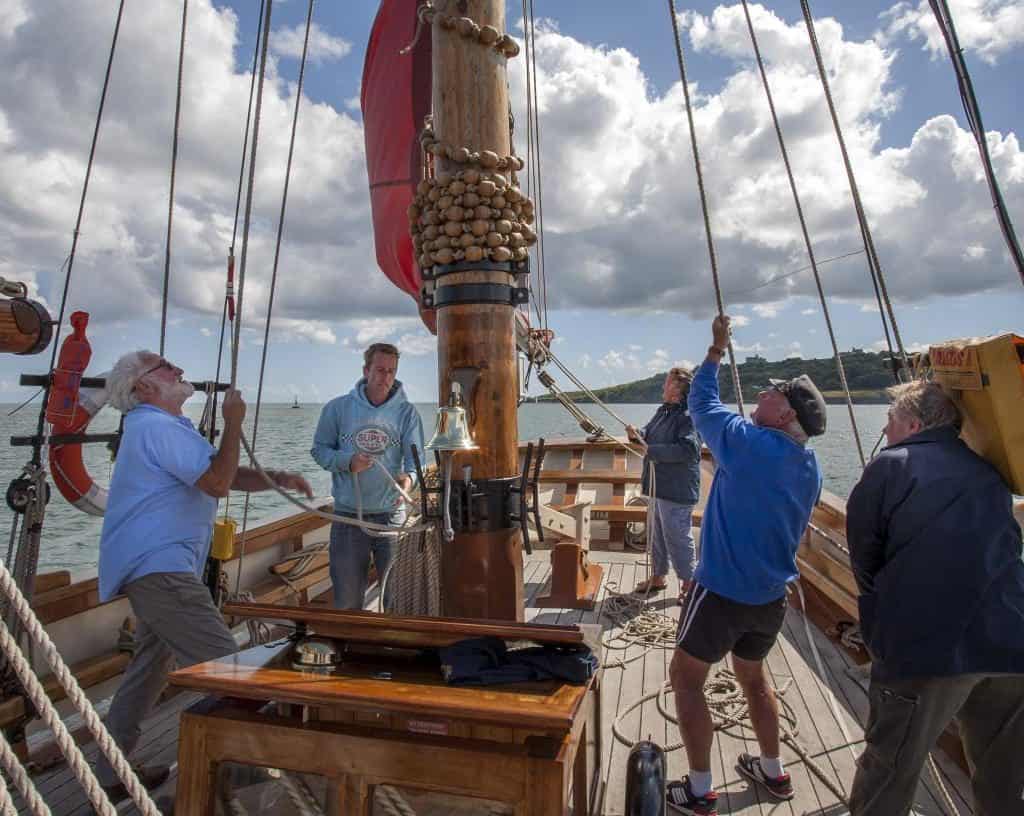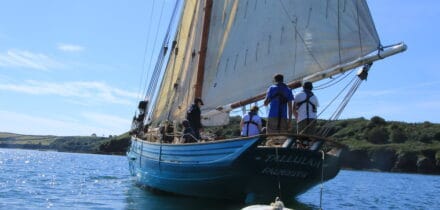Throughout 2024, we’re shining the spotlight on the various ways our customers get more with a Classic Sailing booking.
Sailing on a traditional vessel is not just a holiday; it can also be an insight into maritime tradition! At Classic Sailing, we believe in making this experience as enriching as possible. Whether you’re a first-timer or a returning sailor eager to delve deeper into the art of sailing, understanding the basics can transform your journey from a mere spectatorship. Lets jump aboard Pilgrim of Brixham and we’ll show you the ropes!
Quick Links:
This article is a great place to start, but if you’re looking to go a bit further, we offer the following courses perfect for beginners.
RYA Competent Crew – Shore-based course
RYA Competent Crew – Practical Course
Boat Skills on Pilot Cutter Tallulah
Entry level/beginners courses such as these, provide a good, basic knowledge about the workings of a sailing vessel. By understanding the basics of boat handling, and seamanship, you gain the confidence to participate in sailing the vessel. And that’s what it’s all about!
Our free, online Tall Ships Guide Book is also a brilliant resource. We hope to have an updated version of this later in the year!
The photos below were all taken aboard Pilgrim. She is a fantastic ship on which to learn a plethora of useful sailing skills, whether it’s your first sail or your 50th! If you’d like to sail on Pilgrim, you can see her sailing schedule here.
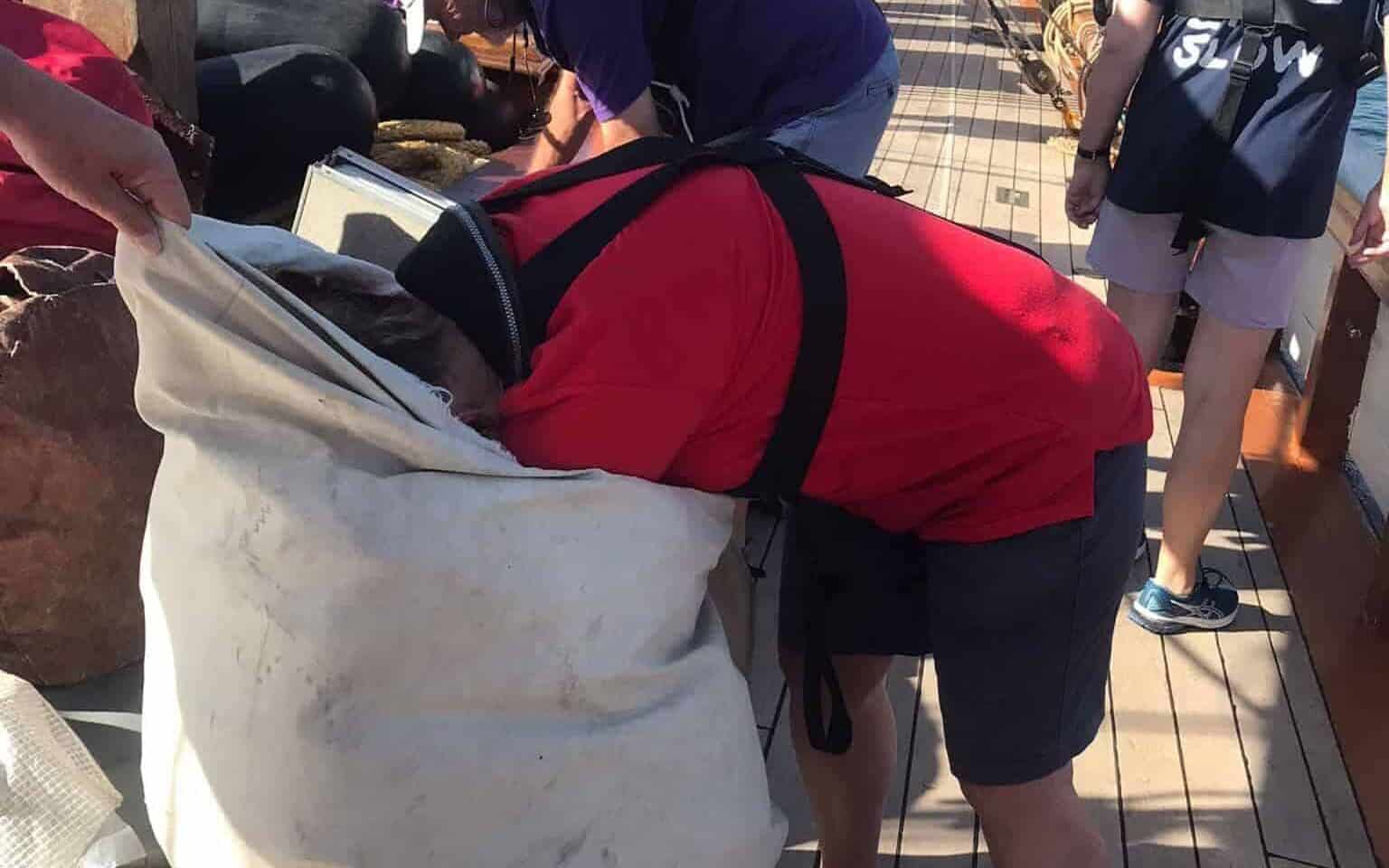
First and foremost, it’s vital to remember that your level of involvement in sailing activities is entirely up to you. While we encourage getting hands-on for an enriching experience, there’s also joy in simply absorbing the beauty of the sea. Our professional crews appreciate your enthusiasm and are always ready to guide you. So, cast aside any hesitation and remember: there is no such thing as a silly question!
The Language of the Sea
“Ready on the bow?” you hear the Skipper call, followed by a positive response form the Mate. There’s a little flurry of activity at the front of the ship, and next thing you know you’re underway! – But what has actually just happened? Is what ready? Now, thick ropes are being carried down the deck and coiled. Other people are pulling big inflatable sausages over the side!? The Skipper is concentrating at the helm and everyone else looks busy… Better sit back and stay out of the way, right? Read on!
At any one moment, there is likely a lot happening on a traditional sailing ship. Some of it you see straight away and some of it is a little more discrete. A bit of nautical know-how goes a long way in boosting your sailing situational awareness and your overall confidence on deck. Familiarising yourself with the basic terms for different parts of the ship and sails can make your involvement more meaningful. These are Pilgrim’s basic parts (though this is just a guide, as different types of ship have different parts!)
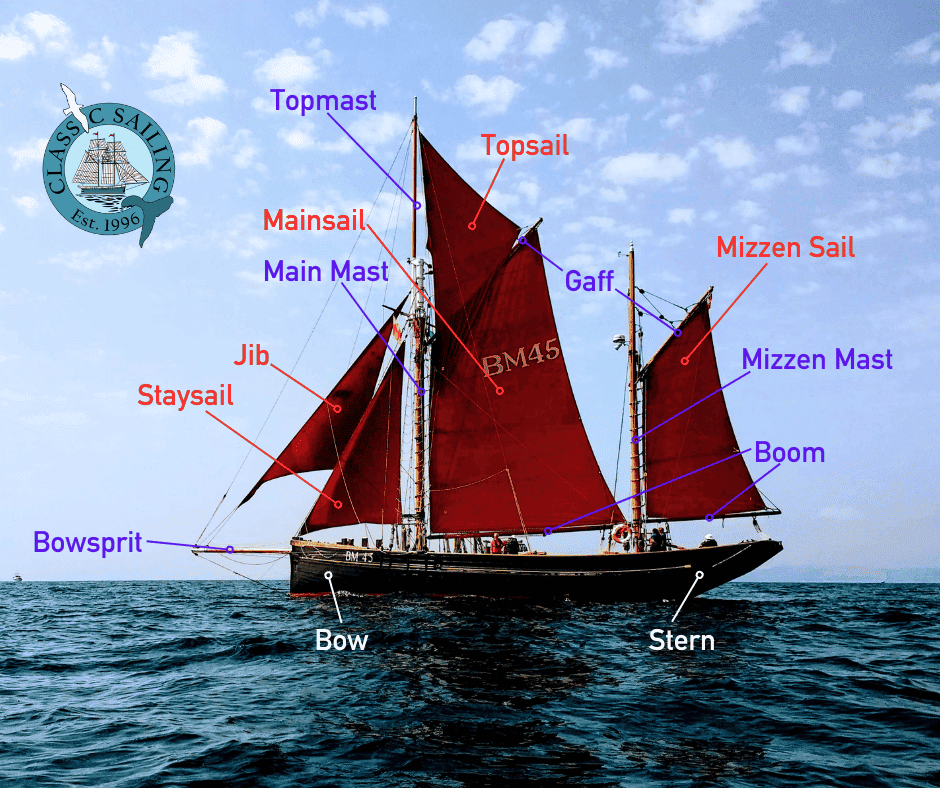
Taking the Helm
The Skipper and crew will be keen to get you involved in many interesting and fun activities (when safe and appropriate to do so of course!). Helming, or steering, involves managing the ship’s wheel or tiller to navigate through the waters. As a helmsperson, your key focus should be on maintaining the course set by the skipper. Helming a large vessel is an exciting opportunity, and figuring out how she responds is a real thrill! Don’t worry – you’ll not be expected to get it right first time and you’ll not be left on deck alone. Skipper may tend to things nearby if they feel you’ve got a knack, but they’ll always have a watchful eye on you and the surroundings, ready to step in or offer guidance.
Two critical tips for good helming are maintaining steady focus and making gradual, considered movements. Remember, the ship doesn’t respond instantly; it needs time to react to your steering.
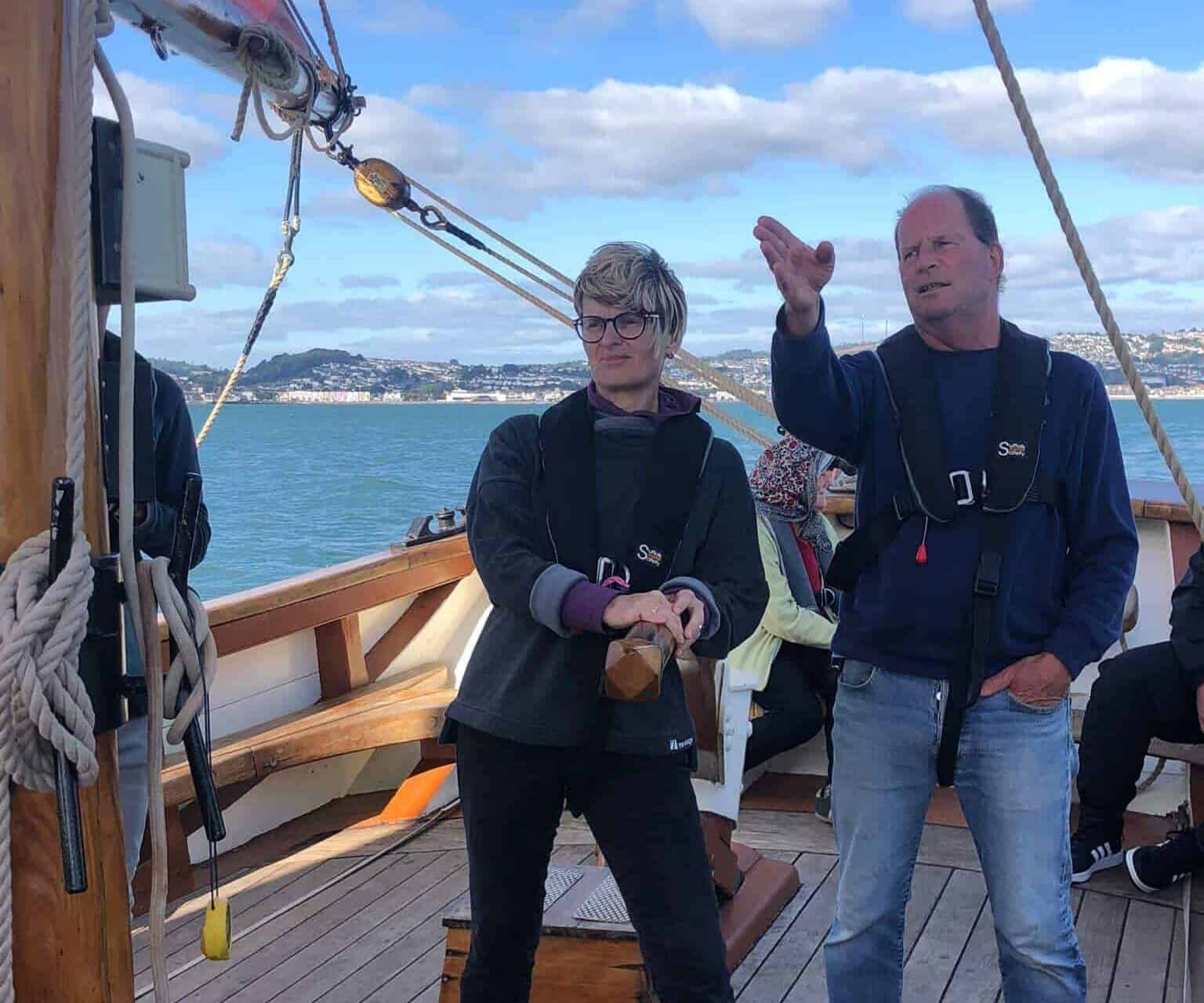
Keeping a Lookout
After trying your hand at steering, you will have noticed how little visibility there is forward of the ship from the helm. So, when you’ve finished your turn on the tiller or wheel, head up towards the bow and see what’s ahead of the ship. You’ll likely find a member of the crew already there! Keeping a lookout is crucial for safe navigation. It’s also a fantastic opportunity to observe the ship and the maritime world around you. This role requires vigilance to spot potential hazards like other vessels, navigation and fishing buoys, and anything else you think the skipper should be aware of. Your keen observation helps the skipper make informed decisions, ensuring a safe voyage for everyone on board. Not to mention you’ll be the first to see dolphins playing in the bow wave, gannets diving into the water or perhaps even a breaching whale!

Sail Handling
Sail handling is a quintessential part of traditional sailing. On gaff-rigged vessels like Pilgrim, this includes raising sails using the “Sweating and Tailing” method; a teamwork-oriented exercise in which 1-2 people pull back on a halyard (sweating), creating slack in the line, and 1-2 people take up the slack as it’s directed down and around a pin (Tailing). This method relies on technique, coordination and body weight inplace of strength or mechanical means (no push-button electric winches or jamming cleats here!) – it’s also a lot of fun and a great workout so do give it a try! I’m only small but I can sweat up Pilgrim’s peak by myself (with the right Tail’er)!
Now they’re up, they sails will need to be manipulated to work efficiently – eased in or out a bit and altered a little with each wind shift. We call this Trimming and it involves “reading the sails”, which is a bit of an art, and the mantra “a flappy sail is an unhappy sail!” – ask the Mate on your ship to show you the process, it’s fascinating and you will feel like you’ve unlocked a new achievement when you first recognise that a sail needs to be trimmed!
Of course at some point the Skipper will want to change course and this is when the chaotic and fun sport of Tacking and Gybing happens! Tacking means turning the ship through the wind – i.e the wind at one point during the turn will be coming straight towards the bow. Gybing on the other hand, involves turning the ship so that the wind hits the stern at some point (see diagram below). Gybing is more dramatic and if not done in a controlled way can be a bit scary! Don’t worry – your crew are all experienced in this and will guide you through.

Shipshape Decks
Every time you move a sail, various lines are taken off their pins and handled. A clean and organised deck is paramount for safety and efficiency. If a line is needed in a hurry, but it’s in a tangled mess on the deck that could be a real problem! So coiling ropes, stowing them on their correct pins, and ensuring the deck is free of junk, fenders and other trip hazards are essential skills. Participating in a deck wash – or swabbing the decks – can be surprisingly enjoyable (especially on a hot day!) and is a gesture much appreciated by the crew. Throwing sea water onto wooden decks also has the benefit of preventing the decktimbers from drying out and shrinking, which in turn keeps annoying drips away below.
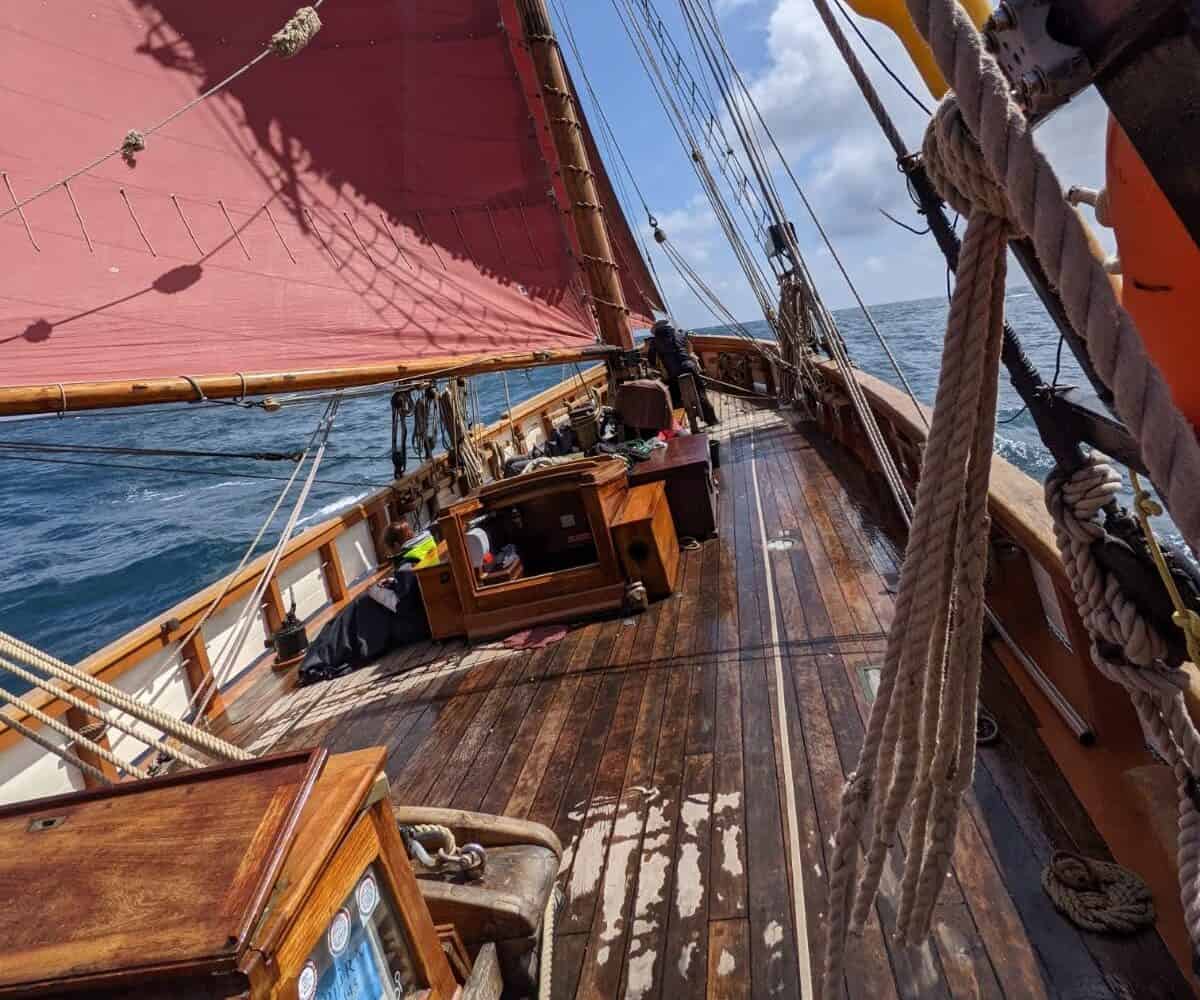
Preparing for Port
As we approach our destination, preparing the ship for mooring is a bustling activity. This involves setting out fenders (those inflatable sausages from earlier) and mooring lines, ensuring they’re ready for use. Now is also a good time to practice your Lookout skills and communicating any hazards you see clearly to the crew. Being attentive and ready to follow the Skipper or Mate’s instructions is crucial during this phase – Sometimes that means just staying out of the way or being ready to throw a line to someone ashore.
Sailing on a traditional ship is a unique blend of learning, adventure, and teamwork. By understanding and participating in these key aspects, you not only contribute to the team but also enrich your own experience. So, come aboard with an eager spirit, ask questions and get stuck in!
